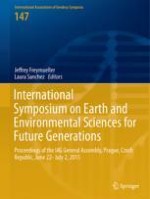2018 | Buch
International Symposium on Earth and Environmental Sciences for Future Generations
Proceedings of the IAG General Assembly, Prague, Czech Republic, June 22-July 2, 2015
herausgegeben von: Jeffrey T. Freymueller, Laura Sánchez
Verlag: Springer International Publishing
Buchreihe : International Association of Geodesy Symposia
